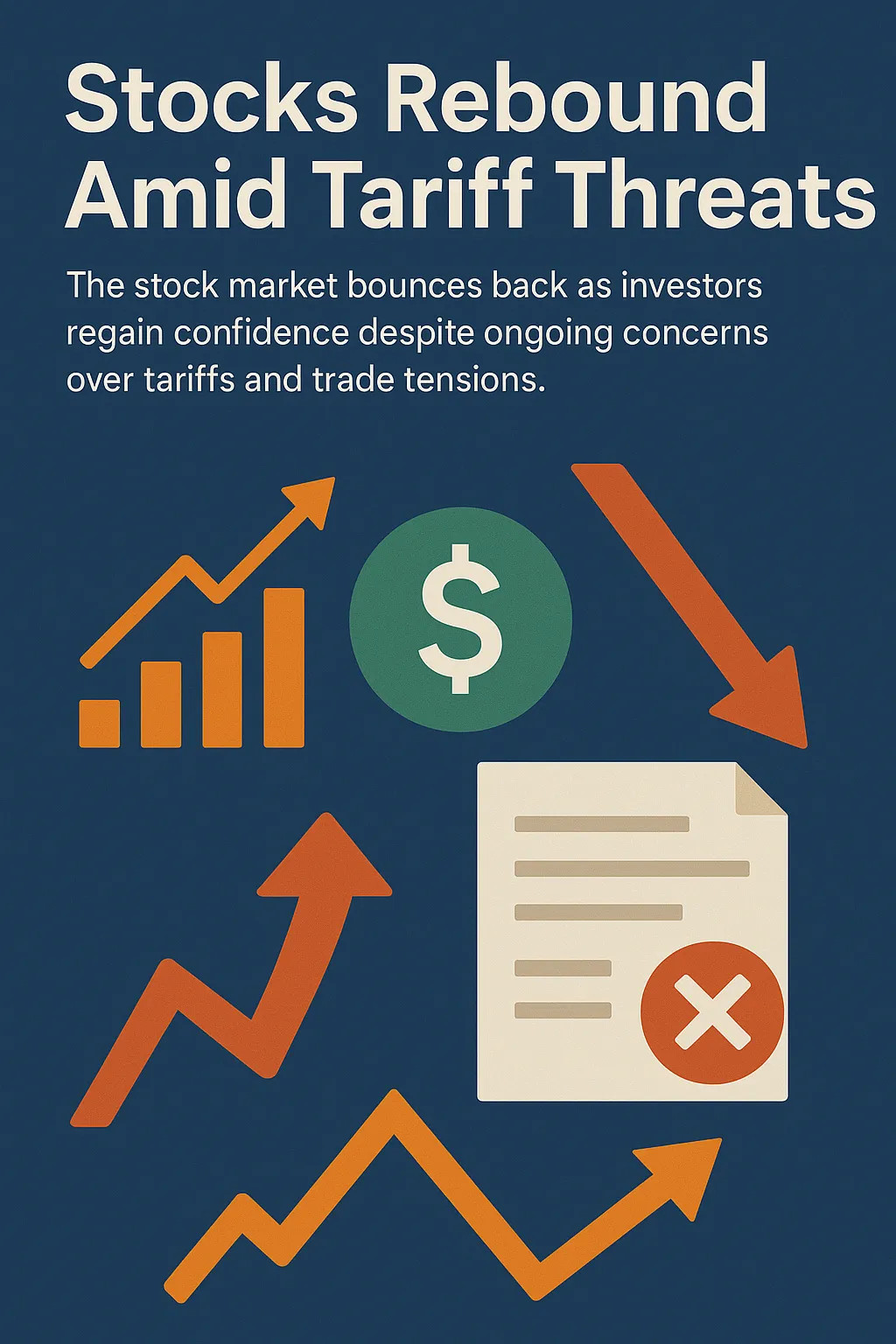
Stocks rebound amid tariff threats
Stocks rebound amid tariff threats
Aggressive tariff policies triggered significant market volatility, including a sharp selloff in early April. This was followed by a strong rebound when the implementation of the most severe tariffs was delayed.
More recently, the market’s relatively muted reaction to tariff headlines suggests that investors are anticipating a reduction in trade tensions. At the very least, they do not foresee a prolonged escalation of tensions or a devastating trade war.
Late last month, Bespoke Group said the S&P 500 underperformed in March and April on days when trade headlines dominated. In May, however, investors generally took trade headlines in stride.
By the end of May, the Dow, the S&P 500 Index, the Nasdaq Composite, and the Russell 2000 Index of smaller companies had all risen above their levels from April 2, when the reciprocal tariffs were initially announced, according to MarketWatch data.
Besides a ratcheting down of trade rhetoric, let’s look at some of the other factors that have contributed to the market’s rebound and resiliency.
The Treasury market has calmed down. The early April “Liberation Day” tariffs created angst among stock market investors, which led to a selloff in bonds and rising yields (bond yields and bond prices move in opposite directions). Moreover, the dollar, which historically has been a magnet for foreign capital during heightened uncertainty, began to slip in value. The federal deficit looms in the background, but the bond market's earlier jitters have settled down, restoring a sense of stability—for now.
Recent inflation data has been soft. While consumer sentiment may be uninspired, consumer spending indicates they haven’t thrown in the towel.
Although the Federal Reserve has been telegraphing that it is in a wait-and-see mode regarding rate cuts, significant cracks in the economy have yet to develop.
The unemployment rate has remained steady, the economy is creating new jobs, and layoffs remain generally low, as evidenced by first-time claims for jobless benefits (Dept. of Labor data).
First-quarter profits came in much better than expected, according to LSEG. While tariffs are generating uncertainty, forecasts provided by various firms during their respective earnings reports were generally favorable.
For the most part, economic data is backward-looking. It doesn’t definitively tell us how events will unfold.
However, when market volatility increases, I continue to suggest the approaches I have discussed in the past. Keep your investments diversified, be aware of your risk tolerance during market downturns, concentrate on your long-term objectives, and refrain from making decisions based solely on the unavoidable fluctuations in market activity.
It’s an evidence-based strategy that paid off for Warren Buffett. I believe that it will help you achieve your financial goals.
I trust this review has been informative.
If you have any concerns or would simply like to talk, please contact me.
Thank you for choosing me as your financial advisor. I am honored and humbled by your trust.
